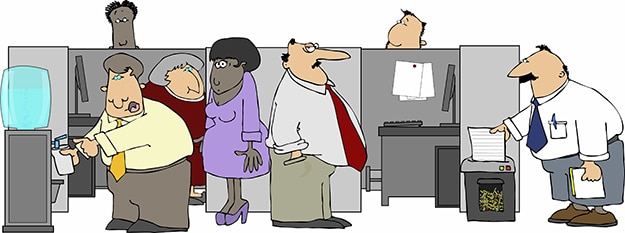
Tackling Obesity in the Workplace Requires Digging Deep
October 9, 2014 | Staffing Blog
Could your employees’ waistlines be costing your company money?
Earlier this year, health insurance company Cigna released an analysis of 20 years of short-term disability claims. Obesity was a definite culprit. The company reported that absence related to obesity, treatment for skin cancer and herniated disc surgery increased significantly from 1993 to 2012.
The Centers for Disease Control and Prevention defines obese adults as those with a body mass index of 30 or greater. While BMI isn’t perfectly precise, it does give an indication of body fat based on a person’s height and weight.
Over the last 20 years, the number of obese Americans has doubled. According to Cigna’s study, short-term disability claims related to obesity have increased by 3,300%. Yes, that’s right: 3,300%. Some of those absences can be linked to bariatric surgeries, but much of it is also connected to health problems that result from being overweight, such as diabetes.
Also noted in the Cigna study, obese individuals may be less apt to make lifestyle changes, which leads to more physical problems as well as depression. Presenteeism, defined as sick or distracted employees who choose to work anyway, accounts for 39.4% of the total cost of obesity to employers and as much as 75% of lost employee productivity from U.S. employers.
American businesses lose an average of 2.8 million workdays a year thanks to unplanned absences. Putting that number into dollars means employers are losing $74 billion a year.
A recent Workforce.com article notes the importance of getting to the root cause of an employee’s obesity. Certainly lack of exercise, poor eating habits and stress are common culprits. Obesity then leads to things like diabetes, chronic back pain as well as depression. While workplace wellness programs can be successful they don’t always get to the underlying cause of a physical condition. Adding behavioral counseling to an employee wellness program could help in figuring out what’s really keeping an employee from exercising or coping well with stress.
Yes, having apples, nuts and water in the break room and paying for fitness classes are great ways to encourage healthy behavior, but also consider providing counseling services or bringing in a behavioral health practitioner who can work with employees to get them to a place where they feel ready to hit the gym and eat the apples. Your overall bottom line will thank you.
